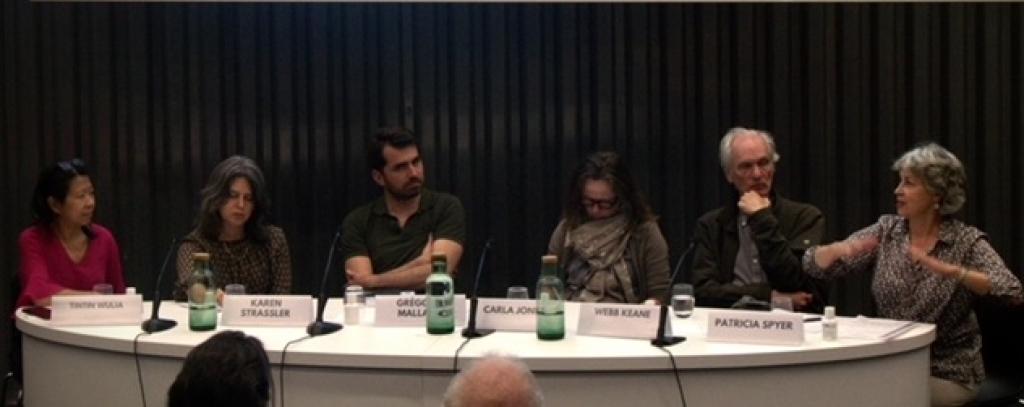Faculty and students gathered on 2 June to celebrate the launch of AHCD Faculty Associate Patricia Spyer’s new book, Orphaned Landscapes. After welcome remarks by AHCD Co-Director Gopalan Balachandran, Gregoire Mallard, the event moderator, noted the book offers new insight into the politics of monuments and images and decentres the way we look at street art.
Professor Spyer read an extract from the book which reflected on its case study, namely the evocative images of Jesus Christ that proliferated on walls and billboards around a provincial town in eastern Indonesia in a conflict pitting Muslims against Christians in the late 1990s. Their emergence and disappearance over the following ten years, she said, provide the narrative arc of the book. It analyses their affective charge and material presence, noting their restorative force—in bringing the Christian god and the Christian self into vision—for the Christian community, as well as the ways in which they retooled imagination and practice even after they disappeared.
Karen Strassler, Professor of Anthropology at Queens College, CUNY Graduate Center, said the book illuminates the relationship between images and violence. While images of violence is the focus of most of the literature, this approach has limits as it tends to assume an ontological separation between the violence and the picture itself. Orphaned Landscapes, instead, asks what images do in violence, and in the aftermath of violence. Carla Jones, Associate Professor, Graduate Director and Associate Chair in Anthropology at the University of Colorado Boulder, noted the book’s impact on visuality, politics, and Indonesian studies, highlighting Professor Spyer’s invitation to “feel as a new way to think about the complex and chaotic conditions under which interpretation was not enough”.
Tintin Wulia, an internationally practicing artist and Postdoctoral Fellow at the University of Goethenburg, dug into her own memories of visuality in Indonesia, noting the large cinema banners of the 1990s and truck art—which she referred to as “mobile street art”. Webb Keane, George Herbert Mead Collegiate Professor of Anthropology at the University of Michigan, compared the Indonesian case study evoked by the book with murals painted in Belfast and the graffiti-covered subways of New York City in the 1970s.
The book launch was followed by a reception.
Read an interview with Professor Spyer on her book HERE.


